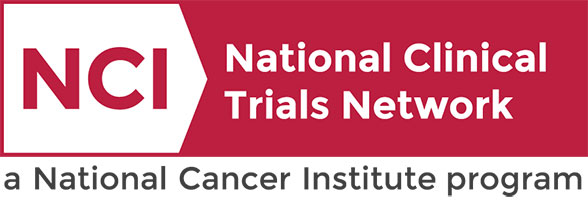Physician Search
 |
 |
| Consuelo Wilkins, MD, MSCI, Senior Vice President for Health Equity and Inclusive Excellence for Vanderbilt University Medical Center (VUMC) and Senior Associate Dean for Health Equity and Inclusive Excellence for Vanderbilt University School of Medicine, always knew she wanted to be a physician. "Health equity was built into everything I did, even if I didn’t know it or recognize it at the time," Wilkins said. "I have always learned and believed that people are the same — everyone deserves to be healthy, and everyone should have the best opportunities to take care of themselves and their families." Click below to learn more about health equity initiatives. https://momentum.vicc.org/2021/09/everyone-deserves-to-be-healthy/ |
Vanderbilt was the lead site for an NIH-funded, phase 2, multicenter influenza vaccine study in pediatric allogeneic hematopoietic stem cell transplant (HCT) recipients that may lead to a change in the current flu vaccine recommendations in this vulnerable population. Natasha Halasa, MD, MPH and colleagues recently published in the New England Journal of Medicine, that two doses of high-dose trivalent flu vaccine resulted in higher amounts of influenza-specific antibodies than two doses of standard dose quadrivalent vaccine. https://news.vumc.org/2023/03/02/high-dose-flu-vaccine-beneficial-for-pediatric-stem-cell-transplant-patients/ |
Imatinib Mesylate and Combination Chemotherapy in Treating Patients with Newly Diagnosed Philadelphia Chromosome Positive Acute Lymphoblastic Leukemia
Multiple Cancer Types
This randomized phase III trial studies how well imatinib mesylate works in combination with two different chemotherapy regimens in treating patients with newly diagnosed Philadelphia chromosome positive acute lymphoblastic leukemia (ALL). Imatinib mesylate has been shown to improve outcomes in children and adolescents with Philadelphia chromosome positive (Ph+) ALL when given with strong chemotherapy, but the combination has many side effects. This trial is testing whether a different chemotherapy regimen may work as well as the stronger one but have fewer side effects when given with imatinib. The trial is also testing how well the combination of chemotherapy and imatinib works in another group of patients with a type of ALL that is similar to Ph+ ALL. This type of ALL is called ABL-class fusion positive ALL", and because it is similar to Ph+ ALL, is thought it will respond well to the combination of agents used to treat Ph+ ALL.
Pediatric Leukemia,
Pediatrics
III
Friedman, Debra
NCT03007147
COGAALL1631
Nivolumab in Combination with Chemo-Immunotherapy for the Treatment of Newly Diagnosed Primary Mediastinal B-Cell Lymphoma
Multiple Cancer Types
This phase III trial compares the effects of nivolumab with chemo-immunotherapy versus chemo-immunotherapy alone in treating patients with newly diagnosed primary mediastinal B-cell lymphoma (PMBCL). Immunotherapy with monoclonal antibodies, such as nivolumab, may help the body's immune system attack the cancer, and may interfere with the ability of cancer cells to grow and spread. Treatment for PMBCL involves chemotherapy combined with an immunotherapy called rituximab. Chemotherapy drugs work in different ways to stop the growth of cancer cells, either by killing the cells, by stopping them from dividing, or by stopping them from spreading. Rituximab is a monoclonal antibody. It binds to a protein called CD20, which is found on B cells (a type of white blood cell) and some types of cancer cells. This may help the immune system kill cancer cells. Giving nivolumab with chemo-immunotherapy may help treat patients with PMBCL.
Lymphoma,
Pediatric Lymphoma,
Pediatrics
III
Smith, Christine
NCT04759586
COGANHL1931
A Study of Combination Chemotherapy for Patients with Newly Diagnosed DAWT and Relapsed FHWT
Multiple Cancer Types
This phase II trial studies how well combination chemotherapy works in treating patients with newly diagnosed stage II-IV diffuse anaplastic Wilms tumors (DAWT) or favorable histology Wilms tumors (FHWT) that have come back (relapsed). Drugs used in chemotherapy regimens such as UH-3 (vincristine, doxorubicin, cyclophosphamide, carboplatin, etoposide, and irinotecan) and ICE/Cyclo/Topo (ifosfamide, carboplatin, etoposide, cyclophosphamide, and topotecan) work in different ways to stop the growth of tumor cells, either by killing the cells, by stopping them from dividing, or by stopping them from spreading. This trial may help doctors find out what effects, good and/or bad, regimen UH-3 has on patients with newly diagnosed DAWT and standard risk relapsed FHWT (those treated with only 2 drugs for the initial WT) and regimen ICE/Cyclo/Topo has on patients with high and very high risk relapsed FHWT (those treated with 3 or more drugs for the initial WT).
Pediatrics,
Wilms / Other Kidney (Pediatrics)
II
Benedetti, Daniel
NCT04322318
COGAREN1921
A Study to Compare Standard Therapy to Treat Hodgkin Lymphoma to the Use of Two Drugs, Brentuximab Vedotin and Nivolumab
Multiple Cancer Types
This phase III trial compares the effect of adding immunotherapy (brentuximab vedotin and nivolumab) to standard treatment (chemotherapy with or without radiation) to the standard treatment alone in improving survival in patients with stage I and II classical Hodgkin lymphoma. Brentuximab vedotin is in a class of medications called antibody-drug conjugates. It is made of a monoclonal antibody called brentuximab that is linked to a cytotoxic agent called vedotin. Brentuximab attaches to CD30 positive lymphoma cells in a targeted way and delivers vedotin to kill them. A monoclonal antibody is a type of protein that can bind to certain targets in the body, such as molecules that cause the body to make an immune response (antigens). Immunotherapy with monoclonal antibodies, such as nivolumab, may help the body's immune system attack the cancer, and may interfere with the ability of tumor cells to grow and spread. Chemotherapy drugs such as doxorubicin hydrochloride, bleomycin sulfate, vinblastine sulfate, dacarbazine, and procarbazine hydrochloride work in different ways to stop the growth of cancer cells, either by killing the cells, by stopping them from dividing, or by stopping them from spreading. Cyclophosphamide is in a class of medications called alkylating agents. It works by damaging the cells deoxyribonucleic acid (DNA) and may kill cancer cells. It may also lower the bodys immune response. Etoposide is in a class of medications known as podophyllotoxin derivatives. It blocks a certain enzyme needed for cell division and DNA repair and may kill cancer cells. Vincristine is in a class of medications called vinca alkaloids. It works by stopping cancer cells from growing and dividing and may kill them. Prednisone is in a class of medications called corticosteroids. It is used to reduce inflammation and lower the body's immune response to help lessen the side effects of chemotherapy drugs. Radiation therapy uses high energy x-rays to kill tumor cells and shrink tumors. Adding immunotherapy to the standard treatment of chemotherapy with or without radiation may increase survival and/or fewer short-term or long-term side effects in patients with classical Hodgkin lymphoma compared to the standard treatment alone.
Pediatric Lymphoma,
Pediatrics
III
Smith, Christine
NCT05675410
VICC-NTPED23306
Accelerated or Standard BEP Chemotherapy in Treating Patients with Intermediate or Poor-Risk Metastatic Germ Cell Tumors
Germ Cell (Pediatrics)
Germ Cell (Pediatrics)
This phase III trial compares the effect of an accelerated schedule of bleomycin sulfate, etoposide phosphate, and cisplatin (BEP) chemotherapy to the standard schedule of BEP chemotherapy for the treatment of patients with intermediate or poor-risk germ cell tumors that have spread to other places in the body (metastatic). Drugs used in chemotherapy, such as bleomycin sulfate, etoposide phosphate, and cisplatin, work in different ways to stop the growth of tumor cells, either by killing the cells, by stopping them from dividing, or by stopping them from spreading. Giving BEP chemotherapy on a faster, or accelerated schedule may work better with fewer side effects in treating patients with intermediate or poor-risk metastatic germ cell tumors compared to the standard schedule.
Germ Cell (Pediatrics)
III
Borinstein, Scott
NCT02582697
COGAGCT1532
Evaluating the Addition of the Immunotherapy Drug Atezolizumab to Standard Chemotherapy Treatment for Advanced or Metastatic Neuroendocrine Carcinomas That Originate Outside the Lung
Neuroendocrine
Neuroendocrine
This phase II/III trial compares the effect of immunotherapy with atezolizumab in combination with standard chemotherapy with a platinum drug (cisplatin or carboplatin) and etoposide versus standard therapy alone for the treatment of poorly differentiated extrapulmonary (originated outside the lung) neuroendocrine cancer that may have spread from where it first started to nearby tissue, lymph nodes, or distant parts of the body (advanced) or that has spread from where it first started (primary site) to other places in the body (metastatic). The other aim of this trial is to compare using atezolizumab just at the beginning of treatment versus continuing it beyond the initial treatment. Immunotherapy with monoclonal antibodies, such as atezolizumab, may help the body's immune system attack the cancer, and may interfere with the ability of tumor cells to grow and spread. Cisplatin and carboplatin are in a class of medications known as platinum-containing compounds that work by killing, stopping or slowing the growth of cancer cells. Etoposide is in a class of medications known as podophyllotoxin derivatives. It blocks a certain enzyme needed for cell division and DNA repair, and it may kill cancer cells. Giving atezolizumab in combination with a platinum drug (cisplatin or carboplatin) and etoposide may work better in treating patients with poorly differentiated extrapulmonary neuroendocrine cancer compared to standard therapy with a platinum drug (cisplatin or carboplatin) and etoposide alone.
Neuroendocrine
II/III
Ramirez, Robert
NCT05058651
SWOGGIS2012
ILND Surgery Alone or after Chemotherapy with or without Radiation Therapy in Treating Patients with Advanced Penile Cancer
Miscellaneous
Miscellaneous
This phase III trial studies how well inguinal lymph node dissection (ILND) surgery alone or after chemotherapy with or without intensity-modulated radiation therapy works in treating patients with penile cancer that has spread to other places in the body. Surgery is used to remove the lymph nodes and may be able to cure the cancer. Drugs used in chemotherapy, such as paclitaxel, ifosfamide, and cisplatin, work in different ways to stop the growth of tumor cells, either by killing the cells, by stopping them from dividing, or by stopping them from spreading. Intensity-modulated radiation therapy uses high-energy x-rays to kill tumor cells and shrink tumors. It is not known whether having surgery after chemotherapy with or without radiation therapy is better than having surgery alone.
Miscellaneous
III
Rini, Brian
NCT02305654
ECOGUROEA8134
Study of INBRX-109 in Conventional Chondrosarcoma
Sarcoma
Sarcoma
Randomized, blinded, placebo-controlled, Phase 2 study of INBRX-109 in unresectable or
metastatic conventional chondrosarcoma patients.
metastatic conventional chondrosarcoma patients.
Sarcoma
II
Davis, Elizabeth
NCT04950075
VICCSAR2165
Comparing an Alternative Surgical Procedure, Sentinel Lymph Node (SLN) Biopsy, with Standard Neck Dissection for Patients with Early-Stage Oral Cavity Cancer
Head/Neck
Head/Neck
This phase II/III trial studies how well sentinel lymph node biopsy works and compares sentinel lymph node biopsy surgery to standard neck dissection as part of the treatment for early-stage oral cavity cancer. Sentinel lymph node biopsy surgery is a procedure that removes a smaller number of lymph nodes from your neck because it uses an imaging agent to see which lymph nodes are most likely to have cancer. Standard neck dissection, such as elective neck dissection, removes many of the lymph nodes in your neck. Using sentinel lymph node biopsy surgery may work better in treating patients with early-stage oral cavity cancer compared to standard elective neck dissection.
Head/Neck
II/III
Topf, Michael
NCT04333537
NRGHN006
Standard Chemotherapy in Treating Young Patients with Medulloblastoma or Other Central Nervous System Embryonal Tumors
Neuroblastoma (Pediatrics)
Neuroblastoma (Pediatrics)
This phase IV trial studies how well standard chemotherapy works in treating young patients with medulloblastoma or other central nervous system embryonal tumors. Drugs used in standard chemotherapy work in different ways to stop the growth of tumor cells, either by killing the cells, by stopping them from dividing, or by stopping them from spreading.
Neuroblastoma (Pediatrics)
IV
Esbenshade, Adam
NCT02875314
VICCPED1751




